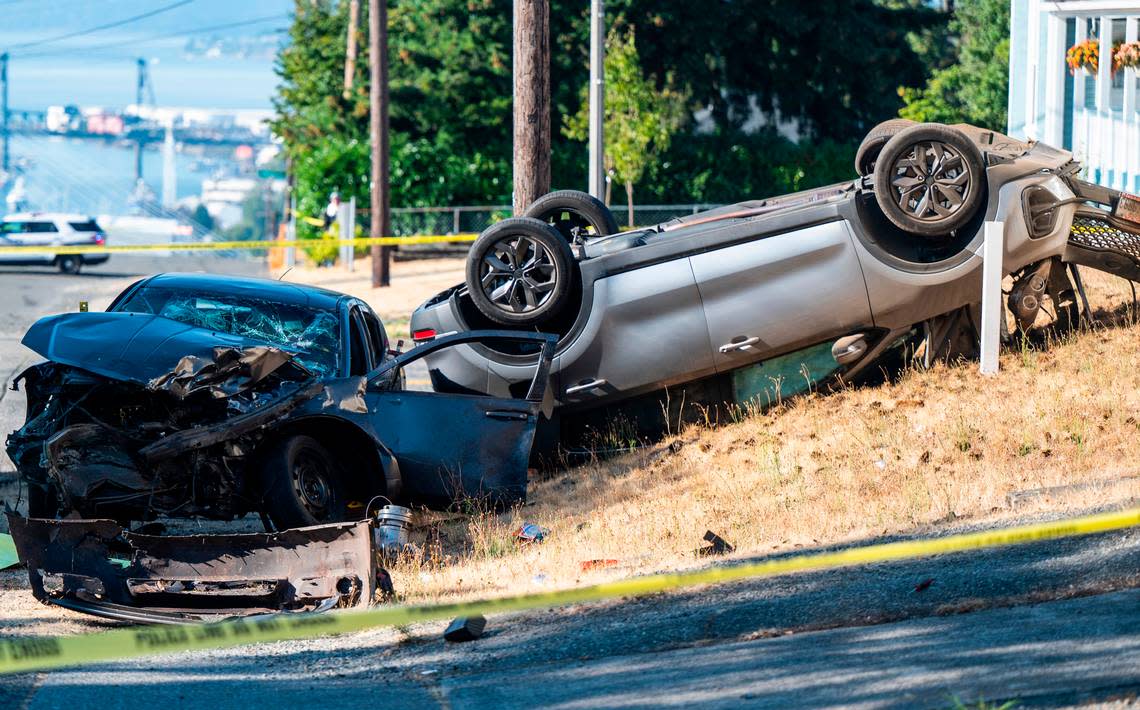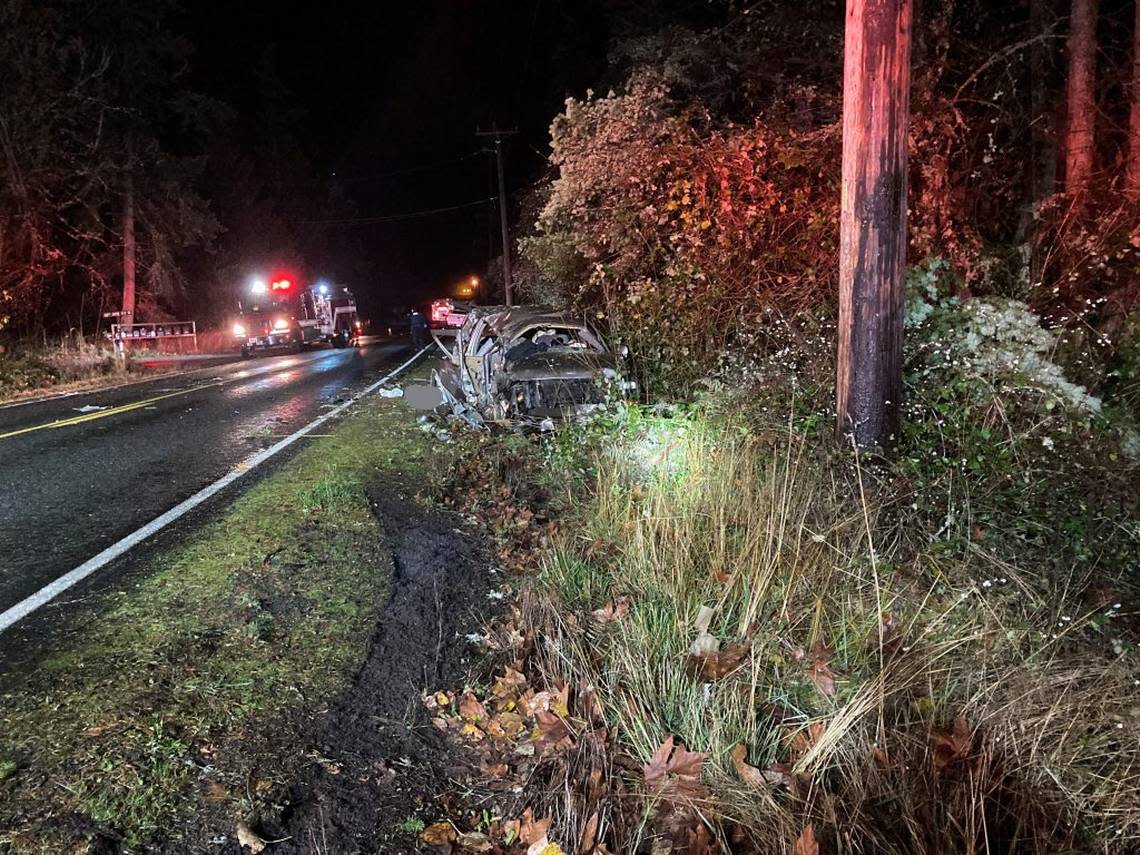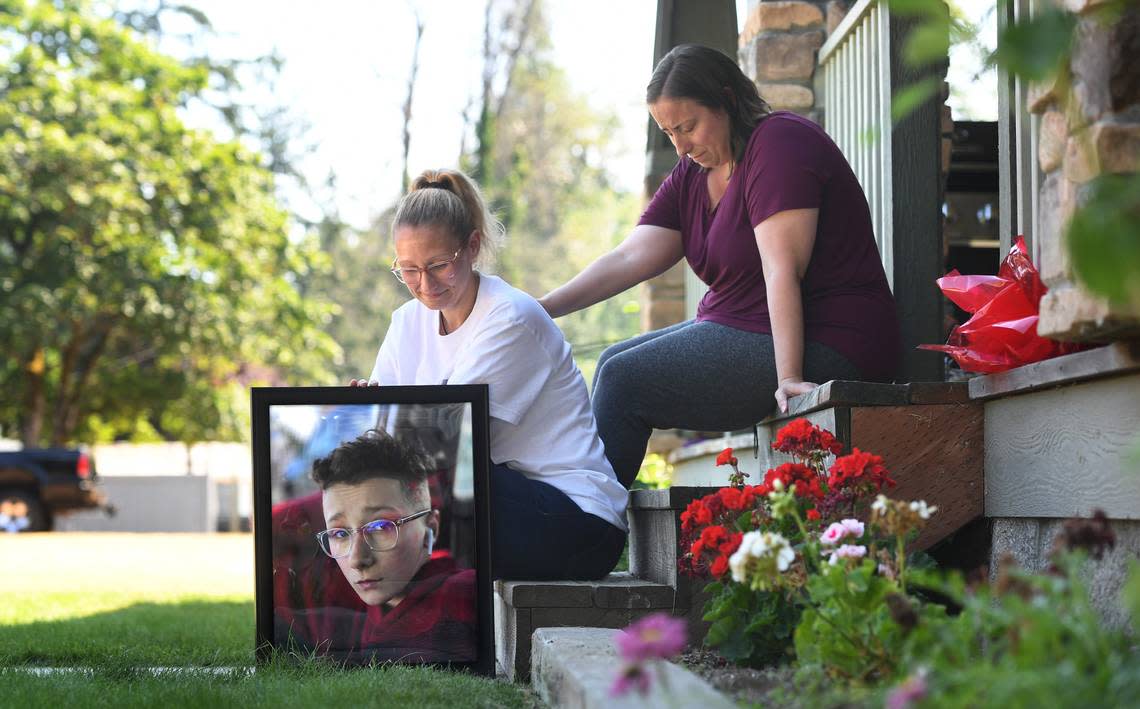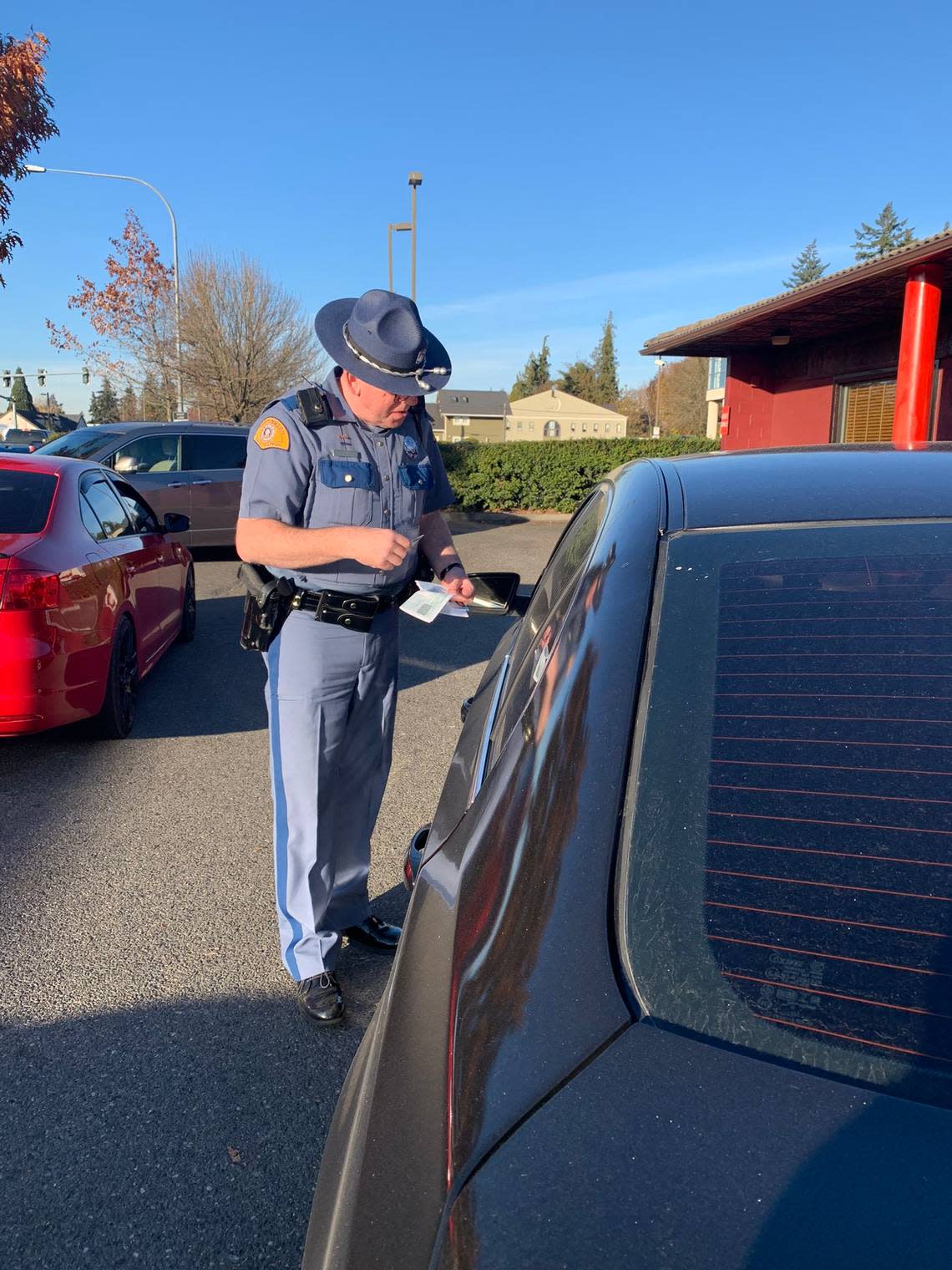More people are dying in crashes than 30 years ago. Are WA roads historically unsafe?
A rise in traffic fatalities in Washington has alarmed officials, who say incidents have reached a crisis level following the state’s deadliest year in three decades.
The 745 deaths recorded in 2022, according to preliminary data from the Washington Traffic Safety Commission, were the most in the state since 825 in 1990. The spike, up 11% over the year prior, has cast a renewed spotlight on bad road behavior, faulty transportation infrastructure and the importance of driver education.
“I think our roads are more dangerous than at any other time in the history of our state,” state Sen. John Lovick, D-Mill Creek, told The News Tribune.
Traffic fatalities more than doubled in all of Pierce County between 2012 and 2021, according to data maintained by the Traffic Safety Commission, which won’t release local or more in-depth state numbers for last year until May.
“This is violence playing out on our roadways,” Pierce County Council Chair Ryan Mello said.

State and local officials suggested that a cultural change is necessary to reverse troubling occurrences of risky behind-the-wheel exploits, such as impaired driving and speeding, while vowing to wisely use traffic-safety funds to re-design problematic public infrastructure and boost educational messaging.
In nearly one-third of all fatal crashes statewide between 2012 and 2021, a driver tested positive for alcohol, according to Traffic Safety Commission data. More than 83% of alcohol-positive drivers tested over the current legal blood-alcohol concentration (BAC) limit, a News Tribune analysis found.
Lovick, a former Washington state trooper, proposed a bill this Legislative session to lower the BAC limit for drivers from .08 to .05. The shift would be the strictest in the country alongside Utah. Lovick said the intention of the bill, which did not pass out of the Senate by a Wednesday evening deadline but could be revived later in a budget proviso, is not punitive but to make drivers think twice about choosing to drive after drinking at all.
His bill, opposed by the hospitality industry, was one of at least several driving-related pieces of legislation brought forward by lawmakers this year. Among them: Proposals to curtail illegal street racing, toughen penalties for specific negligent driving, expand felony convictions for repeat DUI offenders and mandate driver’s education for young people.
Pierce County and Tacoma councils have adopted Vision Zero initiatives in recent years, seeking to eliminate all traffic fatalities and serious injuries by 2035 through a data-driven and eventual action-oriented approach. Gov. Jay Inslee’s 2023 budget, citing a 17% increase in statewide traffic fatalities from 2020 to 2021, calls for infrastructure improvements, including finally completing bicycle and pedestrian projects that were approved in 2015.
The sharp uptick in traffic deaths year-over-year in Washington is reminiscent of the 1970s, the last time the state saw increases at a similar rate, according to a presentation in January to the Traffic Safety Commission by its research director, Staci Hoff.
“It terrifies me, to be honest with you,” Debbie Driver, a senior transportation policy advisor for Inslee, said in an interview. “I think we’re at a level where I can understand why someone would say it’s a crisis.”
Sounding the alarm
In typical years, the Traffic Safety Commission, which serves as the official census for traffic fatalities in Washington, wouldn’t release figures for the previous year until May. When officials announced the 32-year high in January, they felt a duty to show the alarming trend sooner than usual, according to agency director Shelly Baldwin.
The figure of 745 people killed on Washington roads and highways in 2022 could rise as agency researchers review crash incidents and medical examiners’ and coroners’ records from last year, Baldwin told The News Tribune. But her takeaway would not be different.
“My heart goes out to all those families that have lost loved ones unnecessarily on our roadways,” she said. “I think that’s the crisis and the big tragedy of that number.”
Baldwin said what’s happening behind the wheel is a reflection of societal issues, including alcohol- and substance-use disorders, violent crime and mental health.
The number of drivers under the influence of multiple drugs, or poly-drug use, has shocked agency officials, she said.
Between 2012 and 2021, roughly 36% of statewide fatal crashes involved a driver who tested positive for at least one drug, according to Traffic Safety Commission data. Drug-positive drivers were more than twice as likely to test positive for multiple drugs than for just one, regardless of whether they were also using alcohol, the data shows.
Baldwin said it was time for another cultural shift in traffic safety. While historical changes brought vehicle-design improvements, seat belt laws and the formation of advocacy groups, including Mothers Against Drunk Driving, a renewed sense of personal responsibility is imperative, she said.
“We could change this right now,” Baldwin said. “We just need to have that attitude.”
Decade increase in local deaths
The upward trend of traffic deaths has struck Pierce County particularly hard over the past decade, a span in which the county and state have seen significant population growth.
Some officials cited that growth as a factor in there being more deaths on the road.
Between 2012 and 2021, nearly 12% of all statewide fatalities occurred in Pierce County, which is commensurate with its population share as the second-largest county in Washington. But that share of traffic deaths is growing — from under 10% in 2012 to nearly 15% in 2021 — according to a News Tribune analysis of the most recent Traffic Safety Commission data.
As the number of fatalities across the state increased by about half from 2012 to 2021, Pierce County saw more than a two-fold incline from 42 to 98, the data shows.
Most of the deaths during that stretch were recorded in the unincorporated county (312) and the city of Tacoma (169).
Pierce County Sheriff’s Department spokesperson Sgt. Darren Moss said that increases in aggressive driving illustrated how people’s attitudes toward obeying the law have shifted in the wake of recent changes in Washington that significantly limited police pursuits and scrapped drug possession as a felony. Reckless drivers are emboldened to ignore orders to pull over, he said, knowing that they won’t be chased.
“It’s so drastically different than anything I’ve ever seen before,” Moss said. “Don’t be shocked with the results, because that’s part of the consequences of making it easier to commit crimes.”
The department also is feeling the staffing crunch affecting law enforcement nationwide. There were as many as 15 deputies in the traffic unit when Moss joined the department in 2011, he said. Now there are nine. With fewer deputies, there has been less proactive enforcement in high-speed areas than before.

The city of Tacoma is trying to fill its own shortage of police officers, and officers on the force must prioritize responding to violent crime, Tacoma Deputy Mayor Kristina Walker said. Investing in and directing efforts toward traffic enforcement would be problematic anyway, she said, citing concerns about racial inequities in police stops across the country.
Walker previously served as the executive director of Downtown On the Go, a nonprofit transportation advocacy group. She said that while it seemed easier to blame individual behavior for the rise in traffic deaths, the city needed “to take a hard look at our infrastructure and how we’ve designed our roads.”
Hopeful for change
There were 26 traffic fatalities in Tacoma in 2021, the highest since at least 2012 when there were nine, state data shows.
“It’s certainly unacceptable, and we have to do better,” Walker said.
Infrastructure must be inclusive of all users, including bicyclists and pedestrians, she said. Narrowing road lanes and shortening distances between crosswalks were good examples. The federally supported Vision Zero strategy provides a data-centric avenue for that broad re-thinking of the city’s transportation system.
Tacoma committed to Vision Zero in August 2020 and recently lowered speed limits on residential streets and four neighborhood districts. Pierce County adopted the Vision Zero policy last year.
“Hopefully, we can make a huge impact with this effort,” county lead traffic engineer Sarah Grice said.
Under the initiative, the county will examine granular crash data — from time of day to driver and vehicle behavior — to inform potential systemic transportation changes, Grice said.
The unincorporated county saw 55 traffic fatalities in 2021 — reaching at least a 10-year high after 26 in 2012, state data shows.

The death of 13-year-old Michael Weilert, struck by a vehicle last summer while using a crosswalk in Parkland, illustrated the urgency of the traffic safety crisis and served as the impetus for the county’s commitment to Vision Zero a month afterward, according to Mello, the council chair.
“It’s terrible that it takes tragedies like this to spur government into action,” he said.
More than 21 percent of statewide fatalities in 2021 involved a pedestrian, Traffic Safety Commission data shows. The number of pedestrians killed in 2021 (145) was nearly double that of 2012 (75).
Buckling up?
While it’s still unclear how many traffic deaths in Pierce County the Traffic Safety Commission will report for 2022, another state agency’s figures suggest that countywide deaths could have receded from 2021.
The Washington State Department of Transportation (WSDOT), which tracks incidents reported by law enforcement, recorded 87 fatalities in Pierce County last year, which would be 11 fewer than the prior year.
WSDOT’s figures indicate that the number of fatalities in Tacoma increased to 27, however, which would be one more than in 2021. WSDOT does not break down statistics for the unincorporated county.
Through slightly more than two full months this year, WSDOT has recorded 10 traffic fatalities in all Pierce County, well below pace to reach the recent high from 2021, although Traffic Safety Commission data shows that deadly crashes overwhelmingly occur in dry weather.
“At the end of the day, one life lost is one too many,” Washington State Patrol spokesperson Sgt. Chelsea Hodgson said after being asked to give her reaction to the preliminary number of statewide traffic fatalities in 2022. “The fact that the number is that high is obviously concerning, extremely disheartening to us.”
Hodgson said the agency has been relying on more data-driven methods to guide high-visibility patrols and pooling resources with other law enforcement jurisdictions to address staff shortages. Educating drivers is a main goal, including on buckling up.

More than 20 percent of people killed on roads and highways between 2012 and 2021 were not wearing a seat belt, according to Traffic Safety Commission data. That’s compared to roughly 32 percent who were wearing a belt. Restraint use in other instances was unknown or not applicable.
Pierce County’s seat belt rate was the fourth-worst among 26 of Washington’s 39 counties surveyed last year by the Traffic Safety Commission, which released survey results in February.
In the survey, an estimated 89.4% of Pierce County drivers were observed wearing a seat belt at select sites. The statewide rate was 93.9%, a range where it has hovered for the past decade. The number of unrestrained fatalities and serious injuries statewide haven’t been as high as they are now since before 2010, according to the survey.
“The seat belt use rate in Pierce County has been statistically significantly lower than the state rate three of the last five years, more often than any other county included in the survey,” the survey report summary said.
‘Scared to go out because of traffic’
Speeding remains a concern. On March 1, the Tacoma Police Department warned that it had already responded this year to six traffic fatalities and three crashes resulting in serious injuries.
“Traffic officers continue to find speed as a contributing factor in these deadly collisions,” the department said in a news release.
Between 2012 and 2021, nearly 32% of all fatal crashes in Washington involved a speeding driver, Traffic Safety Commission data shows.
The physical toll on the streets that is startling officials also has had an emotional impact on the public, according to Dr. Anthony Chen, the director of health for the Tacoma-Pierce County Health Department. He was a panelist during a recent traffic safety forum in Tacoma hosted by Downtown On the Go.
“Just as people are scared to go out because of crime,” Chen said during the forum, “there are people scared to go out because of traffic.”
Lovick, the state senator who introduced the alcohol limit-reducing bill for drivers, said that if any industry produced as many deaths as those recorded on Washington’s roads and highways, there would be more action taken.
“How much are we going to tolerate in our communities?” he said.
